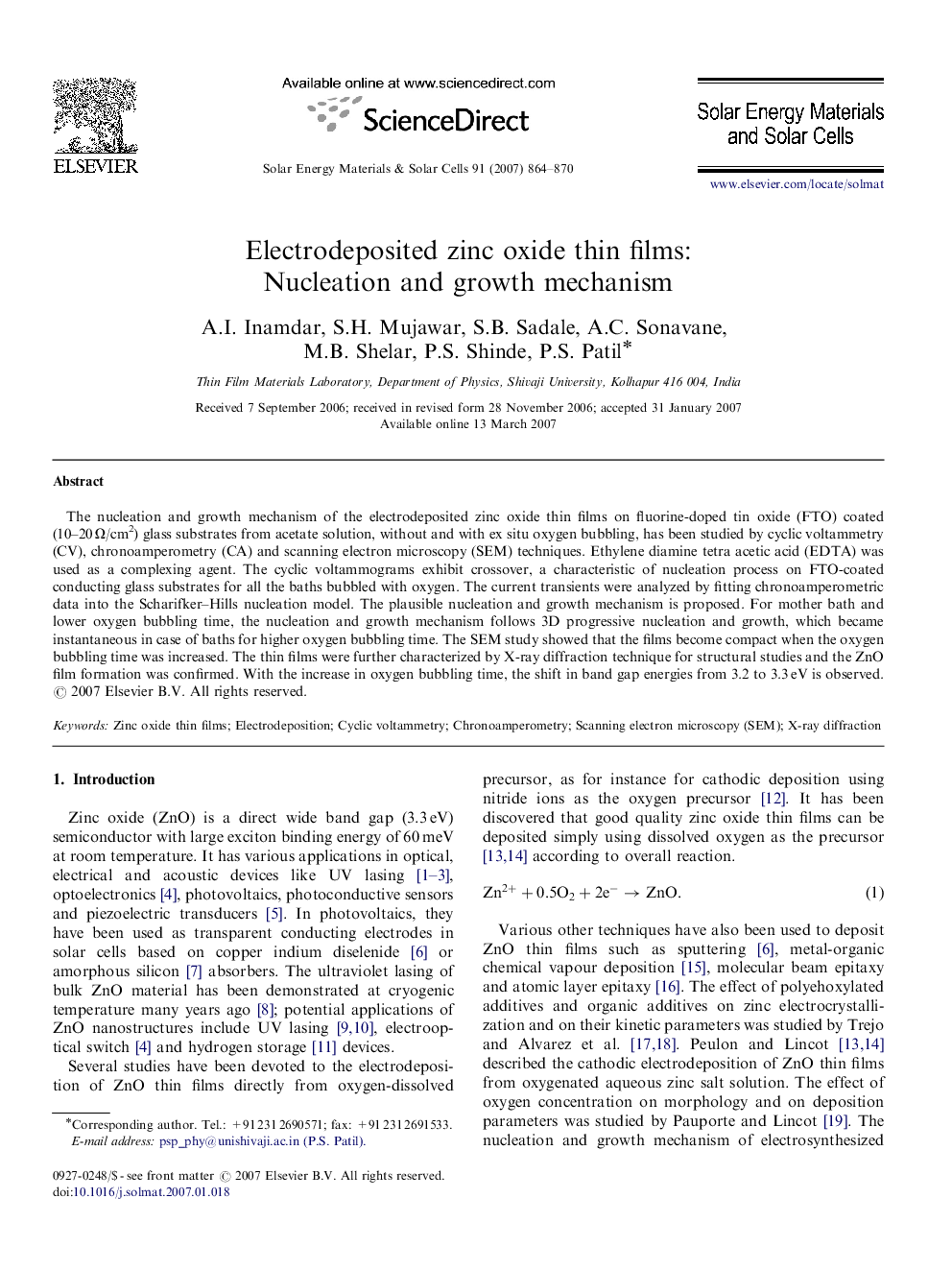| Article ID | Journal | Published Year | Pages | File Type |
|---|---|---|---|---|
| 81127 | Solar Energy Materials and Solar Cells | 2007 | 7 Pages |
The nucleation and growth mechanism of the electrodeposited zinc oxide thin films on fluorine-doped tin oxide (FTO) coated (10–20 Ω/cm2) glass substrates from acetate solution, without and with ex situ oxygen bubbling, has been studied by cyclic voltammetry (CV), chronoamperometry (CA) and scanning electron microscopy (SEM) techniques. Ethylene diamine tetra acetic acid (EDTA) was used as a complexing agent. The cyclic voltammograms exhibit crossover, a characteristic of nucleation process on FTO-coated conducting glass substrates for all the baths bubbled with oxygen. The current transients were analyzed by fitting chronoamperometric data into the Scharifker–Hills nucleation model. The plausible nucleation and growth mechanism is proposed. For mother bath and lower oxygen bubbling time, the nucleation and growth mechanism follows 3D progressive nucleation and growth, which became instantaneous in case of baths for higher oxygen bubbling time. The SEM study showed that the films become compact when the oxygen bubbling time was increased. The thin films were further characterized by X-ray diffraction technique for structural studies and the ZnO film formation was confirmed. With the increase in oxygen bubbling time, the shift in band gap energies from 3.2 to 3.3 eV is observed.
